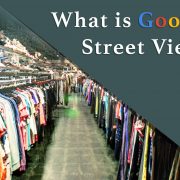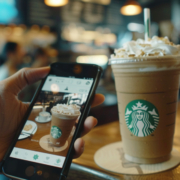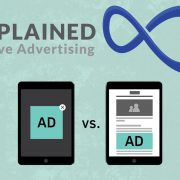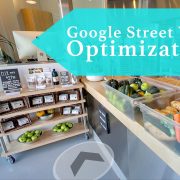What is Geofence Marketing? How It Works & How To Get Started
The digital marketing industry has grown and evolved over the past decade. And, with new forms of technology comes new ways for advertisers to target individual users and create a highly specific, intent-based marketing strategies for their business.
What if it was possible to market to your target customer while they were visiting a competitor’s store? What if you could design geographical perimeters and advertise directly to those in the vicinity of your business?
With geofencing, it’s possible! You can target customers and show them ads when they enter a specific area: whether they are offline or online, whether they are browsing your competitor (or a similar site ), or even when they are new to the product search.
What is Geofence Marketing & Why Should You Use It?
Geofencing marketing works by collecting the device ID tied to your potential customer’s smartphone to reach your audience directly. Advertisers then run ads to these customers right after they’ve collected that information.
More and more, businesses are coming to realize the value that these geofencing campaigns have. Thanks to their ability to find and locate potentially high-intent customers within a designated geographic range, conversion rates can be double or triple that of a standard display advertising campaign.
Different types of alerts can trigger the campaign, and your customers will see one of the following:
- In-app notifications
- Display ads on social media
- Mobile app ads
- Text messages
For example, let’s say you’re a new sandwich shop in town and you’re trying to get people who like to eat sandwiches during their lunch break to visit your store (instead of the other spot in town). You don’t want to waste a ton of money on running traditional ads that may not even reach people who are likely to convert, so you set up a geofence around your competition.
This means that whenever a customer visits your competitor, you can automatically target them with mobile ads to let them know that 1) you exist, 2) you make fantastic sandwiches, and 3) you have a special offer going on. How amazing would it be to capture customers who were ready to purchase AND knew that you had great benefits to offer over your competitor?
How Does Geofencing Work?
Geofencing works by tagging a potential customer as soon as they enter a virtual boundary set up around a location (called a geofence). Geofencing technology uses a series of different points of location data to hone in on those individuals – GPS, radio frequencies, Bluetooth, and WiFi.
In order to tag and target a person, this virtual fence captures the person’s mobile device ID. (Each mobile device has a specific ID that can be collected by the advertiser after they’ve built a geofence around a particular area.) Once that mobile device enters the geofence, the advertiser can immediately start serving ads to those individuals. If a long-term marketing campaign is at play, businesses can compile a list of captured mobile IDs over a certain period of time before serving ads.
While the process of geofence marketing is fairly simple, most businesses will need help from a marketing company to set up geofence boundaries.
Here’s a simple step-by-step look at how geofencing campaigns typically play out:
- Your company sets up a fence in a designated geographic area (whether that’s a retail location, public space or event) and creates an ad campaign tied to that physical location.
- When any user steps into that virtual fence, they are added to your campaign’s audience.
- The potential customer starts seeing campaign ads on social media, mobile apps, text notifications or other display networks – either immediately or soon after being captured.
Push notifications, text messages or alerts, and display ads on apps or social media can all be triggered to the target upon entering your fence.
Examples of Geofencing Campaigns
It’s simple and easy to create a geofence. You’ll be able to choose the area you want to target and how far you want to track customers. For example, you can create a small geofence to start and then scale up, based on response.
One use-case of a successful fence is to pinpoint whether customers walk or drive to your business, then set up a small radius to advertise to them while they are nearby your storefront. Some businesses choose to spotlight specific neighborhoods nearby, while others may set up a geofence around the city.
Social Networks
Snapchat was one of the main apps to start using geofencing. Wherever you go, Snapchat uses your location to create stickers, filters, and to share content through geotargeting. If you use any type of promoted filter when you’re at a store or concert, you are actively within a geofenced location.
Event Marketing
Businesses can set up geofencing marketing campaigns to engage with their audiences at specific events. For example, you can set up a virtual fence at a festival to source all social media posts (or send information about events happening in real-time to your visitors), simply because they are within your fence.
In-Store Promotions
You can also alert customers as soon as they step into your store about different promotions and content. This can be done through targeted ads on social media, such as using geographic location on Facebook to show targeted ads to customers within range of your store.
Additionally, you can set up a retargeting campaign that displays your ads and promotions AFTER your customer leaves in order to reengage them and get them to stop back in.
Where Can You Set Up Geofencing?
There are so many possibilities when setting up geofenced areas. You don’t have to stick to just your stores or zip codes! Here are a few more possibilities:
- Competitor location(s)
- Events and trade shows
- Households or neighborhoods via addressable geofencing
- Nearby streets and other nearby stores
- College campuses
As you can see, there are tons of options, but it’s best to pick locations that will most likely earn the business of the audience. This means understanding your customer’s intent! If a customer is headed to your competitor, then you know they are looking to purchase the same products. This is a great time to use geofence advertising and it can help improve the customer experience of your product.
Create a Geofencing Advertising Strategy
The first important step in determining your geofence is creating buyer personas. When you know who is most likely to buy your products or services, then you can create different target audiences, determining their demographics and location.
Once you know your audience and how they like to shop, you can set up fenced locations around neighborhoods, zip codes, competitor locations, and other specific locations where your audience is likely to visit. (One way that hotels and hospitality companies advertise to vacationers and travelers is to set up a geofence around airports and tourist spots. You can use the same methodology to create a geofence for nearby travelers.)
Should You Use Geofence Marketing?
Geofencing is a smart tactic for companies when it is done right. For one, it can increase shopper loyalty and make it easier to earn new customers. You can also use geofencing to optimize your data and learn more about your audience. Not only that, but you’re likelier to convert people based on your geotargeting!
According to a survey from Search Engine Watch, only 22% of businesses believe that they’re using hyperlocal targeting to their full potential. So, when over 80% of U.S adults own a smartphone, this tactic may present quite the opportunity to stay ahead of your competition!
Interested in learning more? We can help you reap the benefits. Improve your marketing efforts today with the team at iSynergy!











